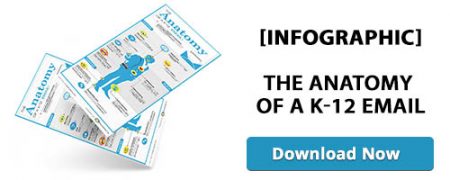Leveraging Grants & Federal Funding to Sell to Schools

Selling to schools isn’t just about having a great product—it’s also about helping schools find the money to buy it. Many districts rely on federal funding and grants to purchase new technology, curriculum resources, and educational services. Understanding how schools access these funds can help vendors align their sales strategies with available funding opportunities.
Understanding School Funding Sources
School funding comes from multiple sources, each with different rules and restrictions. The key sources include:
- Federal Funding: Programs like Title I (for low-income schools), IDEA (special education funding), and ESSER (emergency relief funds) provide financial support for specific initiatives.
- State and Local Funding: Varies by state but typically covers operational costs, instructional materials, and staff salaries.
- Grants: Schools apply for competitive and formula-based grants from government agencies, private foundations, and nonprofits to support educational programs.
- Special Funding Programs: Some districts receive targeted funding for STEM education, career and technical programs, and digital learning initiatives.
Key Grants and Federal Programs Schools Use
- Title I Grants: Provide additional funding to schools serving a high percentage of low-income students.
- IDEA (Individuals with Disabilities Education Act) Funding: Supports special education programs and resources.
- ESSER (Elementary and Secondary School Emergency Relief) Funds: Allocated to schools for COVID-19 recovery efforts, technology upgrades, and learning loss intervention.
- Perkins Career & Technical Education (CTE) Grants: Support vocational and technical education programs.
- E-Rate Program: Helps schools afford internet connectivity and telecommunications services.
How Vendors Can Leverage Grants and Federal Funding
1. Research Available Funding Sources
Schools often struggle to find the right funding opportunities. Vendors who understand the available grants can help guide decision-makers toward the best options for purchasing their products.
Strategy:
- Stay updated on new education funding programs and deadlines.
- Create resources that help schools understand how to apply for relevant grants.
- Partner with grant writers or consultants who assist schools in securing funding.
2. Align Products with Funded Initiatives
Federal and state grants often have specific objectives. Vendors should tailor their messaging to highlight how their products support the goals outlined in funding opportunities.
Strategy:
- Show how your EdTech, curriculum, or service aligns with funding categories like STEM, special education, or digital equity.
- Provide case studies that demonstrate how schools have successfully used your product with grant funding.
- Offer customization options to better fit grant requirements.
3. Offer Flexible Payment Plans & Bundled Services
Schools may have limited access to funds at different times of the year. Vendors that offer flexible payment options can improve their chances of closing deals.
Strategy:
- Structure pricing models that allow schools to pay over multiple budget cycles.
- Provide bundling options that maximize the value of grant funding.
- Offer free trials or pilot programs that can be funded through initial grants.
4. Educate Schools on Grant Application Processes
Many educators and administrators aren’t familiar with how to apply for funding. Vendors that provide guidance on grant applications become valuable partners in the procurement process.
Strategy:
- Host webinars or workshops on how to apply for relevant grants.
- Provide sample grant proposals that schools can use as templates.
- Partner with districts to co-apply for funding opportunities.
Best Practices for Leveraging Grants in Sales
- Understand the Funding Cycle: Schools plan their budgets around funding availability—vendors should align their outreach accordingly.
- Collaborate with Decision-Makers: Work directly with district grant coordinators and procurement officers to help them secure the funding they need.
- Track Funding Deadlines: Knowing when schools receive grants can help vendors time their sales pitches effectively.
- Showcase ROI and Impact: Schools need to justify their purchases when using federal or grant funds. Providing data-driven results increases purchase likelihood.
- Stay Informed on Policy Changes: Education funding policies frequently change, and vendors who stay informed can provide up-to-date guidance to schools.
Conclusion
Schools depend on grants and federal funding to afford new technology, curriculum, and resources. Vendors who understand funding sources and align their offerings accordingly will be better positioned to close deals. By assisting schools with the grant process, providing flexible pricing, and tailoring products to funding objectives, vendors can become invaluable partners in the K-12 education sector.



